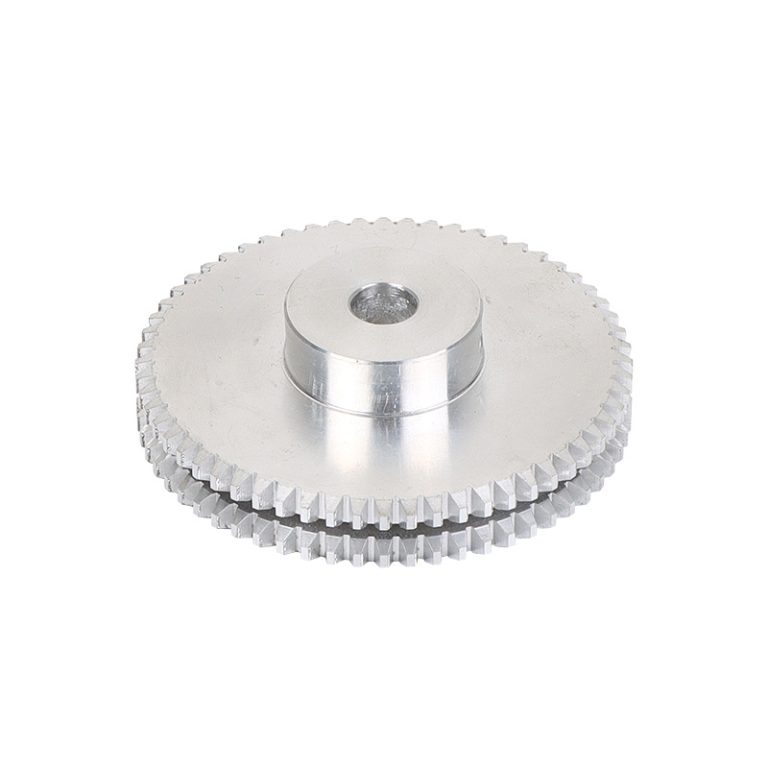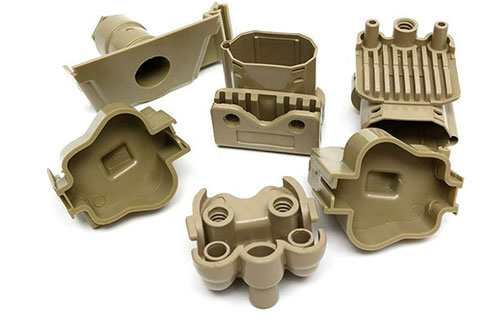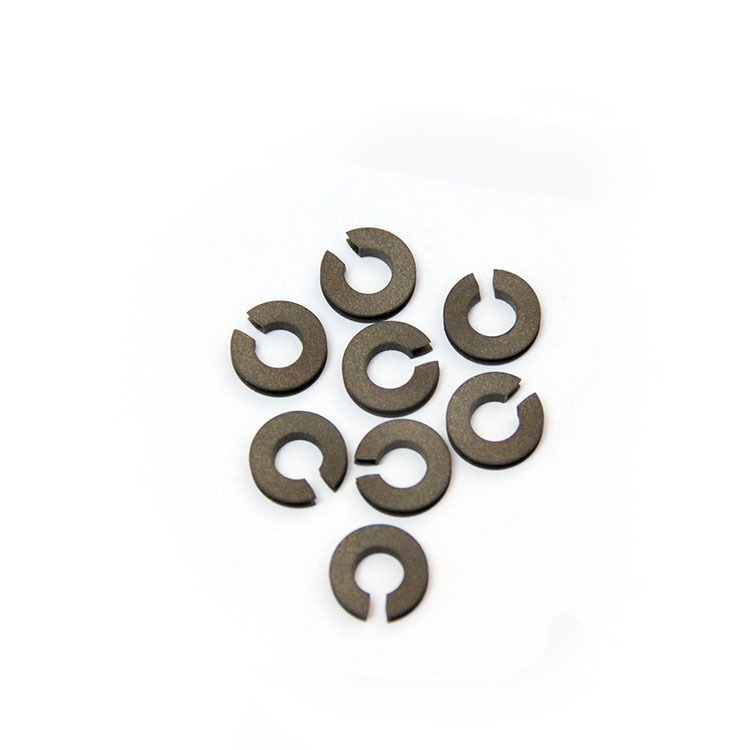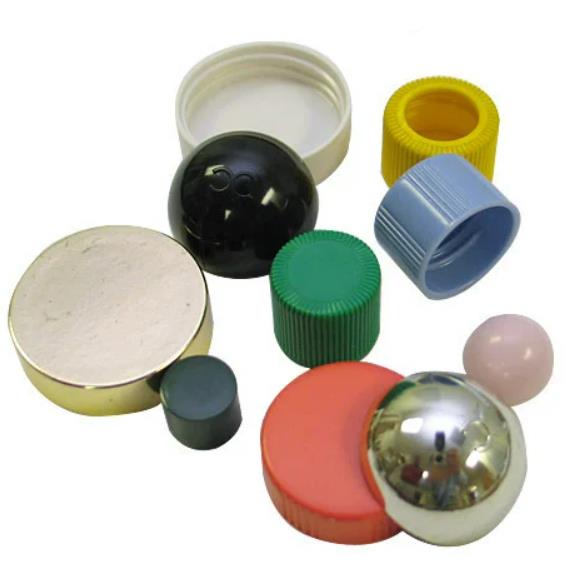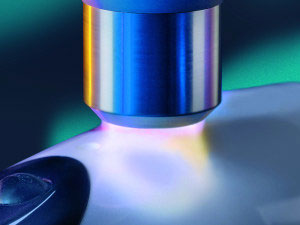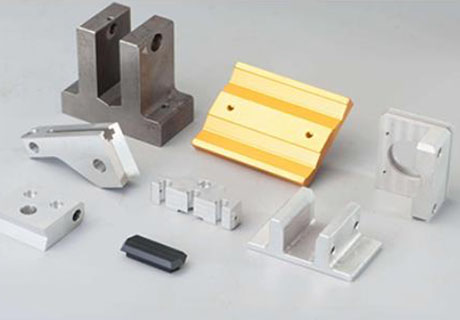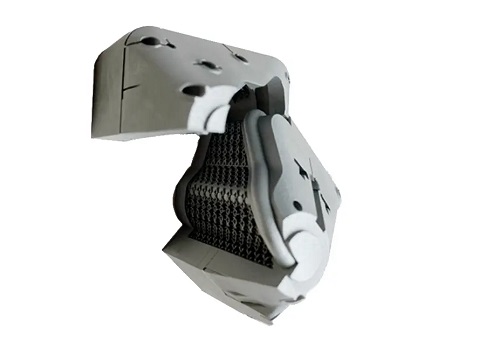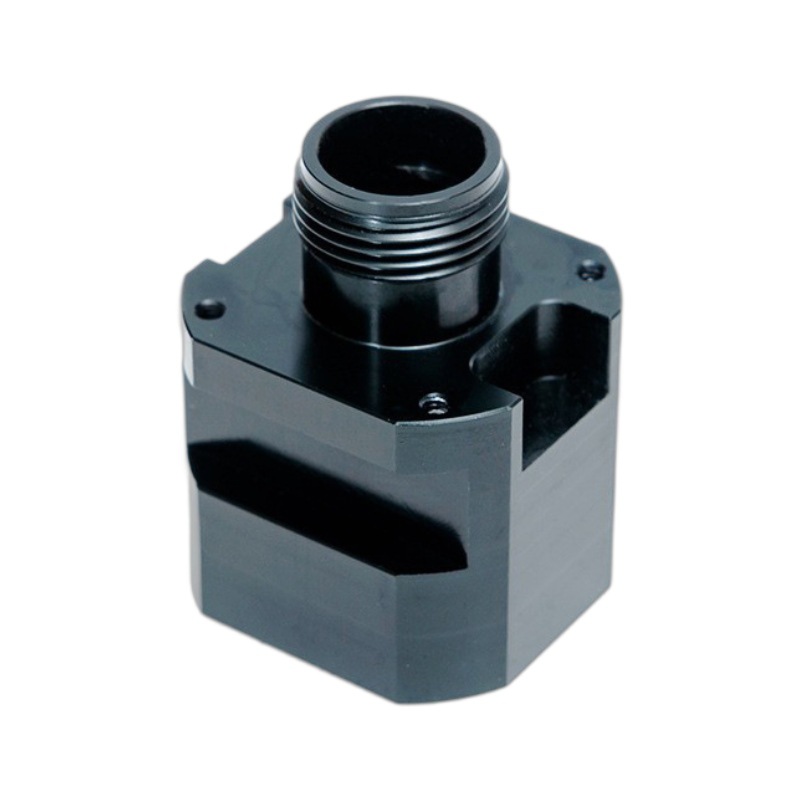Understanding GD&T Position Tolerance Basics
GD&T, which stands for Geometric Dimensioning and Tolerancing, is a system used to define and communicate the allowable variations in the form, orientation, location, and runout of features on a part. Position tolerance, a key aspect of GD&T, is defined as the total amount that a feature's actual location is permitted to vary from its theoretically exact position. This theoretically exact position is determined based on the design requirements and is often related to a set of defined datums.
For example, Yigu Technology consider a circular hole in a flat plate. The position tolerance of this hole would define the acceptable deviation of the hole's center point from its intended location on the plate. If the hole is supposed to be exactly 50 mm from the left edge and 30 mm from the top edge of the plate, the position tolerance will state how much this position can vary while still ensuring the proper functionality and assembly of the part. This tolerance is usually specified as a plus or minus value around the nominal (theoretical) dimension.
Mathematically, if the nominal position of a feature in a two - dimensional plane is given by coordinates \((X_{nominal}, Y_{nominal})\), and the position tolerance is \(\pm t\), then the acceptable range of the feature's position \((X_{actual}, Y_{actual})\) must satisfy the following inequalities:\(X_{nominal}-t\leq X_{actual}\leq X_{nominal} + t\)
\(Y_{nominal}-t\leq Y_{actual}\leq Y_{nominal} + t\)
In a three - dimensional space, an additional coordinate \(Z\) would be involved, with similar tolerance inequalities. This clear - cut definition allows manufacturers to understand precisely the limits within which they must produce the part features.
Types of GD&T Position Tolerance
There are several types of GD&T position tolerance, each with its own specific application and importance in ensuring the proper functionality of a part. The main types include position, concentricity, and symmetry.
Position
Position tolerance is used to control the location of a feature relative to its true position, which is determined by basic dimensions and datums. It can apply to points, lines, or surfaces. Yigu Technology For example, in a printed circuit board (PCB), the position of holes for mounting components is crucial. If a hole is designed to be at a specific coordinate on the PCB, the position tolerance will define how much the actual hole position can deviate from this ideal coordinate.
Mathematically, for a two - dimensional position of a circular hole, if the nominal coordinates of the hole center are \((X_{nominal}, Y_{nominal})\) and the position tolerance is specified as a circular tolerance zone with a diameter of \(t\), any point \((X_{actual}, Y_{actual})\) within the circle defined by the equation \((X_{actual}-X_{nominal})^2+(Y_{actual} - Y_{nominal})^2\leq(\frac{t}{2})^2\) is considered acceptable.
In a more complex three - dimensional scenario, such as a multi - axis machining operation where a complex part has various features like pockets, bosses, and holes, position tolerance ensures that each feature is located precisely where it should be relative to the overall part design. This is essential for proper assembly, as components need to fit together accurately. For instance, in an engine block, the positions of cylinder bores relative to each other and other engine components must be within tight position tolerances to ensure proper engine performance.
Concentricity
Concentricity is a type of position tolerance that specifically deals with the co - axiality of circular features. It is mainly concerned with the centers of circles (or cylinders) being on the same axis. For Yigu Technology example, in a pulley - shaft system, the pulley and the shaft are circular components. If the pulley is not concentric with the shaft, it can cause uneven wear, vibration, and inefficiency in power transmission.
To measure concentricity, we often consider the difference between the center of the outer circle (e.g., the outer diameter of a pulley) and the center of the inner circle (e.g., the bore of the pulley that fits onto the shaft). If the concentricity tolerance is \(t\), it means that the maximum allowable deviation between these two centers along the axis of rotation should not exceed \(t\). In a precision - engineered bearing, the concentricity of the inner and outer races is critical. A small concentricity error can lead to premature bearing failure due to uneven stress distribution on the rolling elements.
Let's take a look at a Yigu Technology table comparing the characteristics of position and concentricity:
| Tolerance Type | Application Focus | Measured Relative to | Mathematical Representation (Simple Example) |
| Position | Location of features (points, lines, surfaces) in 2D or 3D space | Datums and basic dimensions | For a 2D point \((X_{actual}, Y_{actual})\) relative to nominal \((X_{nominal}, Y_{nominal})\) with tolerance \(t\): \((X_{actual}-X_{nominal})^2+(Y_{actual} - Y_{nominal})^2\leq(\frac{t}{2})^2\) (circular tolerance zone) |
| Concentricity | Co - axiality of circular features | The axis of a circular reference feature | If the center of a circle with radius \(R_1\) is \((X_1,Y_1)\) and of another circle with radius \(R_2\) is \((X_2,Y_2)\), and the concentricity tolerance is \(t\), then \(\sqrt{(X_1 - X_2)^2+(Y_1 - Y_2)^2}\leq t\) |
Symmetry
Symmetry tolerance ensures that two or more features are symmetric about a common plane or axis. Consider a keyway in a shaft. The two sides of the keyway should be symmetric about the centerline of the shaft. If they are not symmetric, the key may not fit properly, leading to problems in power transmission or component alignment.
In a mechanical component like a forked part, where the two prongs are designed to be symmetric about a central plane, symmetry tolerance plays a vital role. If the symmetry tolerance is not met, the part may not function as intended, especially when it needs to interact with other components in a symmetric manner. For example, in a car's suspension system, symmetric components need to be precisely manufactured to ensure even load distribution and smooth vehicle operation.
To calculate symmetry, we measure the deviation of the actual feature positions from the ideal symmetric position. If the symmetry tolerance is specified as \(t\), the maximum deviation of the feature from the symmetric plane or axis should be within \(t\).
Calculating GD&T Position Tolerance
Formulas and Methods
Calculating GD&T position tolerance involves several methods depending on the nature of the feature and the design requirements. One of the most common methods is based on coordinate dimensions. If we consider a feature in a three - dimensional space with nominal coordinates \((X_{nominal}, Y_{nominal}, Z_{nominal})\) and measured coordinates \((X_{actual}, Y_{actual}, Z_{actual})\), the position deviation in each axis can be calculated as follows:\( \Delta X=X_{actual}-X_{nominal}\)
\( \Delta Y=Y_{actual}-Y_{nominal}\)
\( \Delta Z=Z_{actual}-Z_{nominal}\)
The total position deviation \(d\) from the nominal position can be calculated using the Euclidean distance formula in 3D space:\(d = \sqrt{\Delta X^{2}+\Delta Y^{2}+\Delta Z^{2}}\)
If the position tolerance is specified as a circular or cylindrical tolerance zone, the diameter of the tolerance zone \(t\) is compared with \(2d\). If \(2d\leq t\), the feature is within the position tolerance.
For example, in a case where the position tolerance is specified as a rectangular tolerance zone with tolerances \(\pm t_x\), \(\pm t_y\), and \(\pm t_z\) in the \(X\), \(Y\), and \(Z\) directions respectively, the feature is within tolerance if \(|\Delta X|\leq t_x\), \(|\Delta Y|\leq t_y\), and \(|\Delta Z|\leq t_z\).
Another important aspect in calculating position tolerance is considering the datum references. Datums are the reference planes, axes, or points from which the position of features is determined. The position tolerance is always relative to these datums. For instance, if a hole's position is defined relative to two perpendicular datum planes \(A\) and \(B\), any deviation of the hole's center from the nominal position calculated with respect to these datums will contribute to the position tolerance calculation.
Practical Examples
Example 1: A Simple Plate with Holes
Consider a rectangular plate with two holes. The design requires that the center of hole 1 is located at \((X_1 = 20\mathrm{mm}, Y_1=30\mathrm{mm})\) relative to two datum edges of the plate, and the center of hole 2 is at \((X_2 = 50\mathrm{mm}, Y_2 = 40\mathrm{mm})\). The position tolerance for each hole is specified as \(\pm0.5\mathrm{mm}\) in both the \(X\) and \(Y\) directions (rectangular tolerance zone).
After manufacturing, the measured coordinates of hole 1 are \((X_{1_{actual}} = 20.3\mathrm{mm}, Y_{1_{actual}}=30.2\mathrm{mm})\), and for hole 2 are \((X_{2_{actual}} = 50.6\mathrm{mm}, Y_{2_{actual}} = 39.8\mathrm{mm})\)
For hole 1:\(\Delta X_1=20.3 - 20= 0.3\mathrm{mm}\)\(\Delta Y_1=30.2 - 30 = 0.2\mathrm{mm}\)
Since \(|\Delta X_1| = 0.3\mathrm{mm}\leq0.5\mathrm{mm}\) and \(|\Delta Y_1|=0.2\mathrm{mm}\leq0.5\mathrm{mm}\), hole 1 is within the position tolerance.
For hole 2:\(\Delta X_2=50.6 - 50=0.6\mathrm{mm}\)\(\Delta Y_2=39.8 - 40=- 0.2\mathrm{mm}\)
Since \(|\Delta X_2| = 0.6\mathrm{mm}>0.5\mathrm{mm}\), hole 2 is out of the position tolerance.
Example 2: A Cylindrical Component with Multiple Features
Let's take a cylindrical shaft with a keyway and a series of holes along its length. The keyway is designed to be symmetric about the axis of the cylinder (a datum axis). The nominal position of the keyway center - plane is along the axis of the cylinder.
The position tolerance of the keyway's center - plane relative to the datum axis is specified as \(\pm0.05\mathrm{mm}\). After measurement, if the deviation of the keyway center - plane from the axis is found to be \(0.03\mathrm{mm}\), the keyway is within the position tolerance.
For the holes along the shaft, assume that one hole is designed to have its center at a distance \(L = 100\mathrm{mm}\) from one end of the shaft (a datum end - face) and at a radial position \(R = 15\mathrm{mm}\) from the shaft axis (datum axis). The position tolerance in the axial direction is \(\pm0.2\mathrm{mm}\) and in the radial direction is \(\pm0.1\mathrm{mm}\).
If the measured axial position of the hole center is \(L_{actual}=100.15\mathrm{mm}\) and the measured radial position is \(R_{actual}=15.08\mathrm{mm}\)
In the axial direction: \(\Delta L=100.15 - 100 = 0.15\mathrm{mm}\leq0.2\mathrm{mm}\)
In the radial direction: \(\Delta R=15.08 - 15=0.08\mathrm{mm}\leq0.1\mathrm{mm}\)
So, the hole is within the position tolerance. These examples illustrate how to calculate position tolerance in real - world engineering scenarios, which is crucial for ensuring the quality and functionality of manufactured parts.
GD&T Position Tolerance in Comparison
Comparison Table
To further clarify the differences between the main types of GD&T position tolerance, the following Yigu Technology table provides a detailed comparison:
| Tolerance Type | Definition | Symbol | Application Scenarios | Calculation Method | Tolerance Zone Characteristics |
| Position | The total amount that a feature's actual location is permitted to vary from its theoretically exact position, determined relative to basic dimensions and datums | A circle (for 2D circular tolerance zone) or a sphere (for 3D spherical tolerance zone) with the tolerance value as the diameter (e.g., Φt for 2D, SΦt for 3D) | Used for controlling the location of various features such as holes, bosses, and slots in a 2D or 3D space, in components like engine blocks, PCBs | In 2D, for a point \((X_{actual}, Y_{actual})\) relative to nominal \((X_{nominal}, Y_{nominal})\) with tolerance \(t\): \(d = \sqrt{(X_{actual}-X_{nominal})^2+(Y_{actual} - Y_{nominal})^2}\), and if \(2d\leq t\) (for circular tolerance zone), it is within tolerance. In 3D, \(d = \sqrt{\Delta X^{2}+\Delta Y^{2}+\Delta Z^{2}}\) with \(\Delta X=X_{actual}-X_{nominal}\), \(\Delta Y=Y_{actual}-Y_{nominal}\), \(\Delta Z=Z_{actual}-Z_{nominal}\) | Circular (2D) or spherical (3D) zone centered at the nominal position, allowing deviation within the zone |
| Concentricity | Deals with the co - axiality of circular features, ensuring that the centers of circular (or cylindrical) features are on the same axis | A circle with a dot in the center, and the tolerance value is the diameter of the cylindrical tolerance zone (e.g., Φt) | Essential in components like pulley - shaft systems, bearings, where co - axiality of circular parts is crucial for smooth operation and power transmission | If the center of a circle with radius \(R_1\) is \((X_1,Y_1)\) and of another circle with radius \(R_2\) is \((X_2,Y_2)\), and the concentricity tolerance is \(t\), then \(\sqrt{(X_1 - X_2)^2+(Y_1 - Y_2)^2}\leq t\). In the case of cylindrical features, the deviation of the axes is measured along the axis of rotation | Cylindrical zone with the reference axis as the center, and the outer boundary of the zone represents the maximum allowable deviation of the center of the circular feature from the reference axis |
| Symmetry | Ensures that two or more features are symmetric about a common plane or axis | A double - ended arrow bisecting a rectangle - like shape, and the tolerance value represents the distance between the two parallel planes of the tolerance zone (e.g., t) | Applied in components like keyways in shafts, forked parts, where symmetry about a plane or axis is required for proper functionality and assembly | Measure the deviation of the actual feature positions from the ideal symmetric position. If the symmetry tolerance is \(t\), the maximum deviation of the feature from the symmetric plane or axis should be within \(t\) | Two parallel planes symmetrically placed about the ideal symmetric plane or axis, and the feature must lie within this zone |
Analysis of Differences
From the above - mentioned table, several key differences among the three types of position tolerances can be identified.
- Application Focus:
- Position tolerance is the most general, applicable to a wide range of features in different geometric forms and dimensions. It is mainly concerned with the overall location of a feature relative to its nominal position, which is defined by basic dimensions and datums. For example, in a complex mechanical assembly, the position of various components such as brackets, mounts, and holes need to be precisely controlled using position tolerance to ensure proper fit and functionality.
- Concentricity is specifically tailored for circular or cylindrical features. Its main purpose is to guarantee that the centers of these circular elements are aligned along the same axis. In a precision - engineered spindle - bearing system, concentricity is critical to prevent uneven wear, vibration, and premature failure of the components.
- Symmetry is centered around the symmetry of features about a plane or axis. It is commonly used in components where visual appearance, balance, or proper mating with other symmetric components is required. For instance, in the design of a symmetrically - shaped automotive body part, symmetry tolerance ensures that both sides of the part are identical in shape and position relative to the central plane.
- Calculation Methods:
- The calculation of position tolerance often involves coordinate - based measurements. In a multi - axis system, the deviation of a feature's position in each axis (\(X\), \(Y\), \(Z\) in 3D) is calculated, and then the overall deviation from the nominal position is determined using the Euclidean distance formula. This method allows for a comprehensive evaluation of the feature's position in a complex geometric space.
- Concentricity calculation focuses on the deviation of the centers of circular features. By measuring the distance between the centers of two or more circular elements, the concentricity error can be determined. In a manufacturing process, precise measurement techniques such as coordinate - measuring machines (CMMs) are often used to accurately measure the center positions of circular components.
- Symmetry calculation involves measuring the deviation of the feature from the ideal symmetric position. This can be achieved by measuring the distances of corresponding points on both sides of the symmetric feature from the reference plane or axis. For example, in the production of a symmetric keyway, the distances of the two sides of the keyway from the centerline of the shaft are measured to check the symmetry tolerance.
- Tolerance Zone Characteristics:
- The position tolerance zone can be circular (in 2D) or spherical (in 3D) when specified as such. This circular or spherical zone provides a uniform allowable deviation around the nominal position, giving manufacturers flexibility in the production process while still ensuring that the feature's position is within the acceptable range.
- The concentricity tolerance zone is cylindrical, with the reference axis at its center. This cylindrical zone clearly defines the allowable deviation of the circular feature's center along the axis of rotation, providing a clear visual and geometric representation of the tolerance limits.
- The symmetry tolerance zone consists of two parallel planes symmetrically placed about the ideal symmetric plane or axis. This type of tolerance zone is suitable for features that need to be symmetric, as it effectively limits the deviation of the feature from the symmetric position in a way that is relevant to the nature of symmetry.
In practical applications, Yigu Technology choosing the appropriate position tolerance type depends on the specific design requirements of the part. If the goal is to ensure the overall location accuracy of a feature, position tolerance is the best choice. When dealing with circular or cylindrical components that require co - axiality, concentricity should be used. And for features that need to be symmetric about a plane or axis, symmetry tolerance is the appropriate option. By carefully considering these factors and selecting the correct position tolerance type, manufacturers can produce high - quality parts that meet the functional and aesthetic requirements of the final product.
